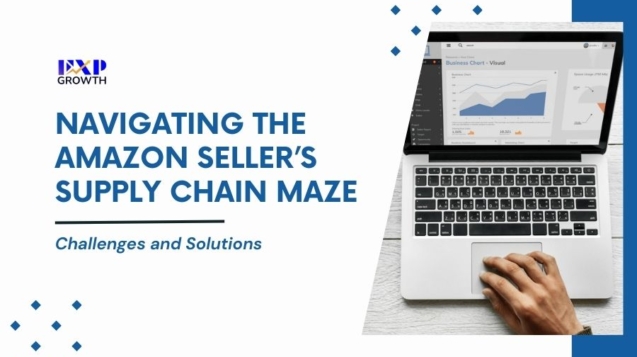Search Engine Optimization (SEO) is a digital marketing strategy that focuses on improving a website’s visibility on search engines such as Google, Bing, and Yahoo. The goal of SEO is to increase the quantity and quality of organic traffic to a website from search engines through the use of specific techniques and tactics.
Components of an SEO
There are several components of an SEO (Search Engine Optimization) strategy. They include:
1. Keyword Research:
Keyword research is the process of identifying the keywords and phrases that potential customers are searching for and incorporating them into website content, meta tags, and other on-page elements. The goal of keyword research is to find the words and phrases that are most relevant to your business and that have the highest search volume and relevance.
The best ways to do keyword research are as follows:
- Identifying the main topics and themes related to your business or industry.
- Using keyword research tools such as Google Keyword Planner, SEMrush, Ahrefs, and others to identify the keywords and phrases that are relevant to your business and have high search volume.
- Analyzing the competition for each keyword or phrase to identify which ones have the most potential for high rankings.
- Identifying long-tail keywords, which are longer and more specific phrases that are less competitive, but still relevant to your business.
- Organizing the keywords into groups and categories that are relevant to your business and your website’s structure.
- Prioritizing the keywords based on their relevance, search volume, and competition.
- Incorporating the keywords into website content, meta tags, and other on-page elements in a way that is natural and user-friendly.
- Continuously monitor the effectiveness of the keywords and make adjustments as necessary.
Keyword research is an important part of SEO, as it helps to ensure that a website’s content is optimized for the keywords and phrases that are most relevant to the business and that have the highest search volume. It also helps to identify new opportunities for content and campaigns that can help drive more traffic to the website.
2. On-page Optimization:
On-page optimization is the process of optimizing elements on a website to improve its visibility and rankings on search engines. The goal of on-page optimization is to ensure that a website’s content and structure are optimized for search engines and that they provide a positive user experience.
On-page optimization typically includes the following steps:
- Title tags: Optimizing title tags to include relevant keywords and accurately describe the content of the page.
- Meta descriptions: Optimizing meta descriptions to include relevant keywords and to accurately describe the content of the page.
- Header tags (H1, H2, H3, etc.): Properly structure header tags to indicate the hierarchy of the content on the page.
- Content optimization: Creating high-quality, keyword-rich content that provides value to the user and is optimized for search engines.
- Image optimization: Optimizing images by compressing them and using descriptive file names and alt tags.
- URL optimization: Creating simple, keyword-rich URLs that accurately reflect the content of the page.
- Internal linking: Linking to other relevant pages on the website to help search engines understand the structure of the website and provide a positive user experience.
- Schema markup: Using schema markup to help search engines understand the content of the page and to provide additional information to users.
By optimizing these elements, a website can improve its visibility and rankings on search engines and provide a positive user experience. It’s important to keep in mind that the on-page optimization should be done in a way that is natural and user-friendly, not only for search engine optimization but also for the user.
3. Technical Optimization:
Technical optimization is the process of improving a website’s underlying code and architecture to ensure that it is accessible to search engines and provides a positive user experience. The goal of technical optimization is to ensure that a website is well-structured, fast-loading, and easy to navigate, which can help to improve its visibility and rankings on search engines.
Technical optimization typically includes the following steps:
- Website architecture: Creating a logical and well-structured website architecture that makes it easy for search engines to understand the structure of the website and for users to navigate.
- Mobile optimization: Ensuring that the website is mobile-friendly and that it loads quickly on mobile devices.
- Website speed optimization: Optimizing the website’s code, images, and other elements to ensure that it loads quickly.
- XML sitemaps: Creating and submitting an XML sitemap to search engines, can help them to understand the structure of the website and to crawl it more efficiently.
- Robots.txt: Creating and submitting a robots.txt file, which can help to control which pages on the website are crawled by search engines.
- Canonicalization: Implementing the rel=”canonical” link element on pages with duplicate or similar content, to prevent confusion for the search engines.
- Redirects: Implementing redirects to ensure that users are directed to the correct page when they click on a link.
- Secure Socket Layer (SSL) certificates: Installing an SSL certificate to encrypt the communication between the website and its users, and to improve the website’s security.
By implementing these technical optimization steps, a website can improve its visibility and rankings on search engines, as well as provide a better user experience.
4. Content Optimization:
Content optimization is the process of creating high-quality, keyword-rich content that provides value to the user and is optimized for search engines. The goal of content optimization is to ensure that a website’s content is relevant, useful, and engaging to both users and search engines.
Content optimization typically includes the following steps:
- Keyword research: Identifying the keywords and phrases that are relevant to the business and that have high search volume and relevance.
- Content creation: Creating high-quality, keyword-rich content that is relevant to the user and provides value. This can include blog posts, articles, product descriptions, and other types of content.
- Title and meta description optimization: Incorporating keywords into the title and meta description of the content to ensure that they accurately reflect the content of the page and are optimized for search engines.
- Headers and subheaders optimization: Incorporating keywords into the headers and subheaders of the content to ensure that they accurately reflect the content of the page and are optimized for search engines.
- Image optimization: Optimizing images by compressing them and using descriptive file names and alt tags, helps search engines understand the content of the images and can also help users with visual impairments.
- Internal linking: Linking to other relevant pages on the website to help search engines understand the structure.
5. Off-page Optimization:
Off-page optimization is the process of building backlinks to a website from other websites, in order to increase its visibility and rankings on search engines. The goal of off-page optimization is to increase the number of quality backlinks to a website, which can help to improve its authority and visibility on search engines.
Off-page optimization typically includes the following steps:
- Link building: Building backlinks to the website from other high-quality websites, such as industry websites, directories, and other relevant sites.
- Social media marketing: Promoting the website on social media platforms, such as Facebook, Twitter, and LinkedIn, in order to increase its visibility and generate backlinks.
- Guest blogging: Writing and publishing guest posts on other websites in order to increase exposure and generate backlinks.
- Online PR: Securing coverage and backlinks from online publications and news sites
- Influencer marketing: Partnering with influencers or thought leaders in your industry to promote your website and generate backlinks.
- Directory submissions: Submitting the website to relevant directories and online business listings.
- Forum and community participation: Participating in online forums and communities related to your industry in order to increase exposure and generate backlinks.
- Brand mentions: Keep track of brand mentions and reach out to the website owner to request a link back to your website.
It’s important to note that quality should be prioritized over quantity when it comes to backlinks, as search engines may penalize websites that have a high number of low-quality links. Additionally, the backlink-building strategy should be natural and not artificially created.
6. Measuring and Analyzing:
Measuring and analytics are an important part of any digital marketing strategy, including Search Engine Optimization (SEO). The goal of measuring and analytics is to track the effectiveness of SEO efforts and make data-driven decisions to improve results.
Measuring and analytics typically include the following steps:
- Setting goals: Defining specific, measurable goals for the website, such as increasing organic traffic, improving search engine rankings, or increasing conversions.
- Tracking key performance indicators (KPIs): Identifying and tracking key performance indicators, such as website traffic, bounce rate, conversion rate, and search engine rankings, can help to measure the effectiveness of SEO efforts.
- Using analytics tools: Use tools such as Google Analytics to track website traffic, user behavior, and other data, and to make data-driven decisions to improve results.
- Analyzing the data: Analyzing the data from analytics tools to identify patterns, trends, and opportunities for improvement.
- Testing and experimentation: Testing different tactics and strategies to see what works best and making adjustments as necessary.
- Monitoring the competition: Keeping an eye on the competition and their SEO strategies and performance.
- Adapting to changes: Continuously monitoring and adapting the SEO strategy to changes in search engine algorithms, the market, and the industry.
By measuring and analyzing data, a website can gain valuable insights into its performance and identify opportunities for improvement. This can help to ensure that SEO efforts are focused on the most effective tactics and strategies and that the website is reaching its goals.
7. Local SEO:
Here are some steps that are typically included in a Local SEO campaign:
- Conduct keyword research: Identify relevant keywords and phrases that people in your local area are searching for.
- Optimize your website: Make sure your website is optimized for the keywords you’ve identified, including meta tags, title tags, and header tags.
- Create local content: Create content that is relevant to your local area, such as blog posts or pages about local events and attractions.
- Claim and optimize your Google My Business listing: Make sure your business is listed on Google My Business and that all the information is accurate and up-to-date.
- Build local citations: Get listed on local directories such as Yelp and YellowPages.
- Get online reviews: Encourage customers to leave reviews of your business on Google, Yelp, and other review sites.
- Build local backlinks: Try to get backlinks from other websites in your local area.
- Track your results: Use tools such as Google Analytics and Google Search Console to track your website’s traffic and rankings, and make adjustments as necessary.
- Stay updated with Google algorithms and trends in local SEO.
Note that this is a general guideline, and the specific steps you take may vary depending on your business, industry, and the local market you are targeting.
Implementing these components will help to improve a website’s visibility on search engines and increase the quantity and quality of organic traffic to the website, which ultimately leads to more leads, sales, or conversions.












